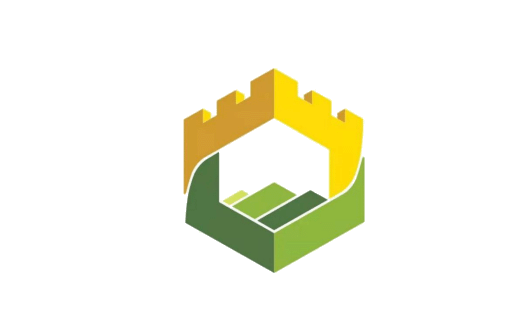了解到这些信息后,我觉得再去埋怨和抱怨基础知识的掌握程度已毫无意义,我需要从做题时间和解题速度方面入手,把其作为解决问题的切入点。
从做题习惯来说,一般在听完听力后,我们都会按照试卷内容的顺序做题。新课标卷在听力后的内容是四篇阅读理解加一篇七选五的文章,若阅读速度慢、理解速度慢、解题速度慢,抛开做题质量不说,仅花在阅读理解上的时间就很多,相应地,后面的考题内容时间就少了。时间紧迫,考试时压力本身就大,肯定就做不完考题了。就算匆匆忙忙做完,做题质量也就一般了,得高分就是痴心妄想了。那么,该如何解决时间不够用的问题呢?
学过英语的人都知道,做阅读理解的方式有两种。一是先读文章再做题,做题时凭印象搜寻问题所在的段落或语句;二是先读题再读文章,做题时带着问题去读文章。通过做题实践,我比较倾向于第二种解题方式。问题是如何去操作,怎么样更明确地指点学生去做,而不是简单地给学生推荐使用第二种阅读方式。通过仔细观察,我发现:做标记是一种很明了有效的提示方式。虽然是简单的数字,但这些数字的作用还是很大的。它不仅提示我们每个题目所在段落的答案,帮助我们在回读文章时能够直接有效地找准答案,而且题目的顺序还能验证是否找对找准所在的段落和语句。并且,最重要的是,这样能节省出较多的时间。这样做,不仅节省了时间,而且正确率也提高了,最终得分也会相应地提高。
具体步骤如下:
1. 拿过阅读理解后,先看题干,确定题目类型(细节理解、主旨大意、写作意图等等)。
2. 通过分析题干,确定关键词,根据关键词在文章中进行搜索。
3.在确定的语段处写上题目的序号,以备在回读文章时进行有目的的理解和选择,甚至是进行验证。
4.根据文章类型的不同,灵活运用题干分析法。
下面举例说明。
A new report says plastics are responsible for $13 billion in damage to the oceans and the undersea environment. The findings were announced recently at a United Nations conference.The report tells about harm to sea life and what might be done to improve the situation.
Plastic thrown away carelessly makes its way into rivers and other waterways. The plastic eventually reaches coastal areas and ocean waters. After a while, it collects in the sea. And plastic never goes away. Plastic is not biodegradable—destroyed by bacteria or natural processes. Instead, it just breaks up into smaller pieces over time. The oceans contain a lot of chemicals and other pollutants. Then, fish may eat the plastics. That means harmful material may get into our food supply.
But people can make a big difference. Human beings cause pollution and they can take steps to stop it. They can use fewer single use product containers and throw plastics away correctly. Plastic recycling programs also works—where old bottles and other plastics are collected, broken down and used to make new products. We could reuse bottles in our households many times if we wish to, rather than end it after the first use. We could, when we get rid of that plastic, recycle it and reuse it, which replaces the need for raw materials.
The report also calls on companies to improve methods for using plastics. It asks for them to better measure and direct plastic use. And it calls for information about the way plastic is thrown out or removed from use. By putting a new value on plastic, industry has a special reason to clean up the environment.But all of the companies must join to deal with the problem.
1. What’s the new report mainly about?
A. Difficulty to get rid of plastics in the ocean.
B. Problems of plastic use and ways to solve it.
C. Damage to sea life caused by waste plastics.
D. Good methods to make and use plastics.
2. Why does the harm from plastics in the sea last forever?
A. Plastics will never move to other places.
B. Fish will eat small pieces of plastics.
C. Plastics will never become harmless.
D. It takes long for plastics to break up.
3. How can we stop the harm of plastics according to Paragragh 4?
A. Recycle plastic products. B. Give up using plastic bags.
C. Improve plastic products. D. Use plastics in other places.
4. Which of the following is true according to the last paragraph?
A. It is time for companies to stop making plastic products.
B. Companies should make completely new plastic products.
C. Companies should make full use of plastic materials.
D. It’s a must for the public to fight against plastic pollution.
看到这篇文章后,我们要先看题干。
第一题,题干中提到the new report,我们可以得知文章内容是一篇报告(report)。研究(或调查)报告的结果一般在首段呈现,(类似的还有新闻报道类,首段是文章主旨),其余段落就是具体表述报告的具体实施过程。在看这个题的选项,四个选项都涉及到了plastics(塑料)。由此我们可以得知,本文是一篇关于塑料的新报告。所以本题考查主旨大意。这时我们可以直接解决这个问题。首先,在第一段旁边写上该题的序号1。现在浏览第一段,我们可以看到有两处提到report,结合题干内容,我们可以锁定第一段的最后一句就是我们要找的原文。读懂这一句,看选项中哪一项与原文是意思相同的。本题答案是B。
对于本篇,我们由此已知文章大体内容,就可以省去全文阅读这一步骤,直接就题找题。
第二题,题干以why开头,问的是原因,说明题干中的其余部分在文章中有体现,我们就可以在原文中寻找和题干一致的表达。所以本题是细节理解题。注意题干中in the sea是个范围(条件)。第一段已经设题,现在我们直接从第二段寻找。第二段第三句话中有in the sea,与题干相符,紧接着第四句And plastic never goes away.与题干中last forever一致。说明我们已找对了题干的内容。现在在这两句话旁边写下题号2。现在我们要寻找why的答句。继续找,就在第五句话。再看选项,哦,与C项相符。
第三题,题干中有Paragragh 4,我们直接在第四段旁写下题号3。现在看题干,how开头,问的是方式,那么题干中we stop the harm of plastics就是本段的主要内容,文章肯定提到了解决办法。由此确定是细节理解题。现在找原文,读到第二句话,就可确定是我们要找的答案。比较选项,我们可知A项符合。
第四题,看题干是判断正误题,并且是the last paragraph(最后一段)。其实,这也可归类为细节题,因为是找到对应的那一句即可。先写上序号4。现在通读最后一段,看与哪个选项表达意思一致。哦,最后一句和选项D对应。
现在我们来验证一下,出题顺序和文章段落顺序一致,所选答案也找到了原文。好,没问题了。
这样,整篇文章我们根本就没有全读,就把答案都选出来了,并且正确率极高。是不是省了很多时间?试想,如果四篇阅读理解若都如此解题,我们是不是能够省出更多的时间,还用担心做不完题?
 联系方式:
联系方式: